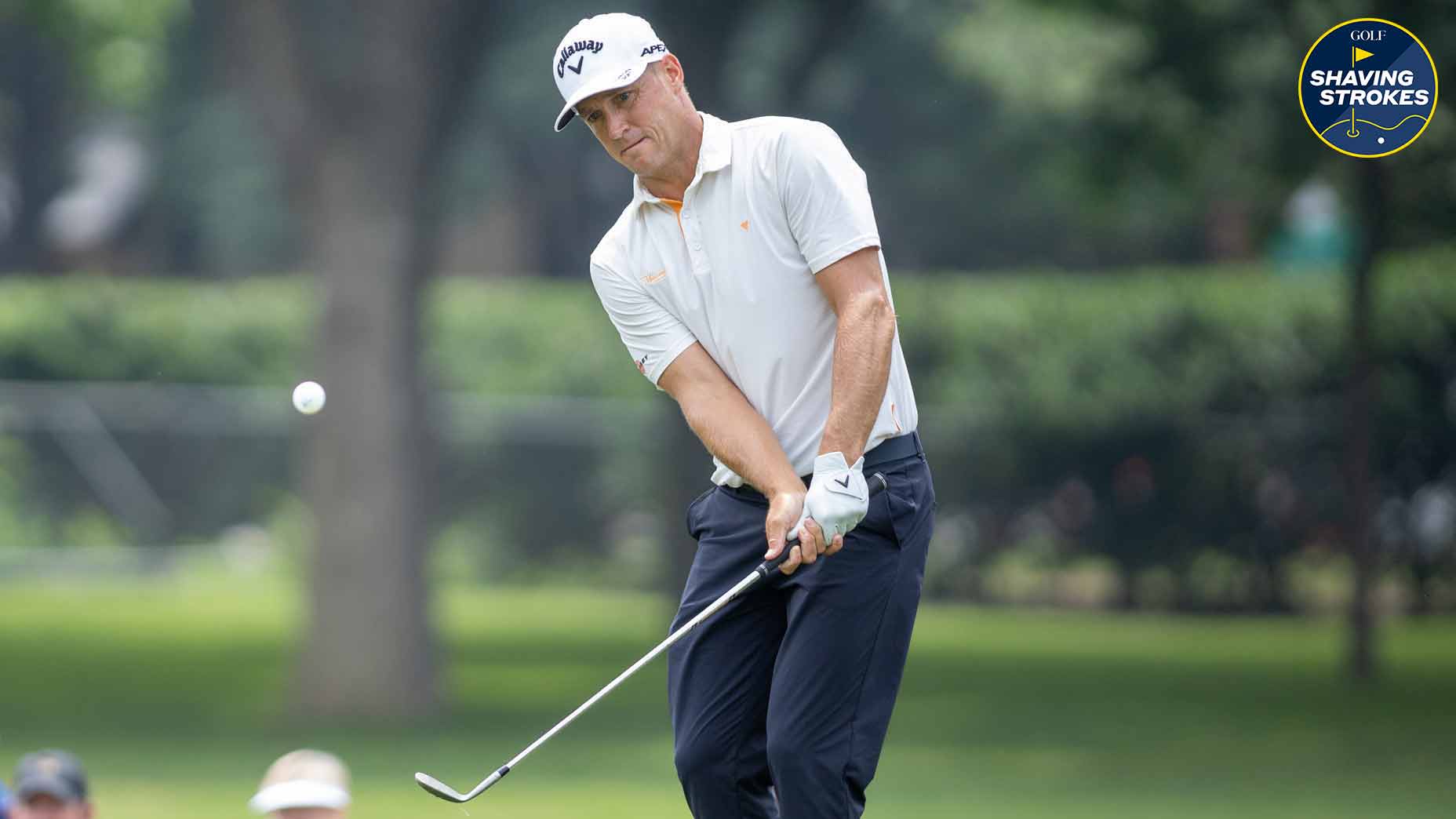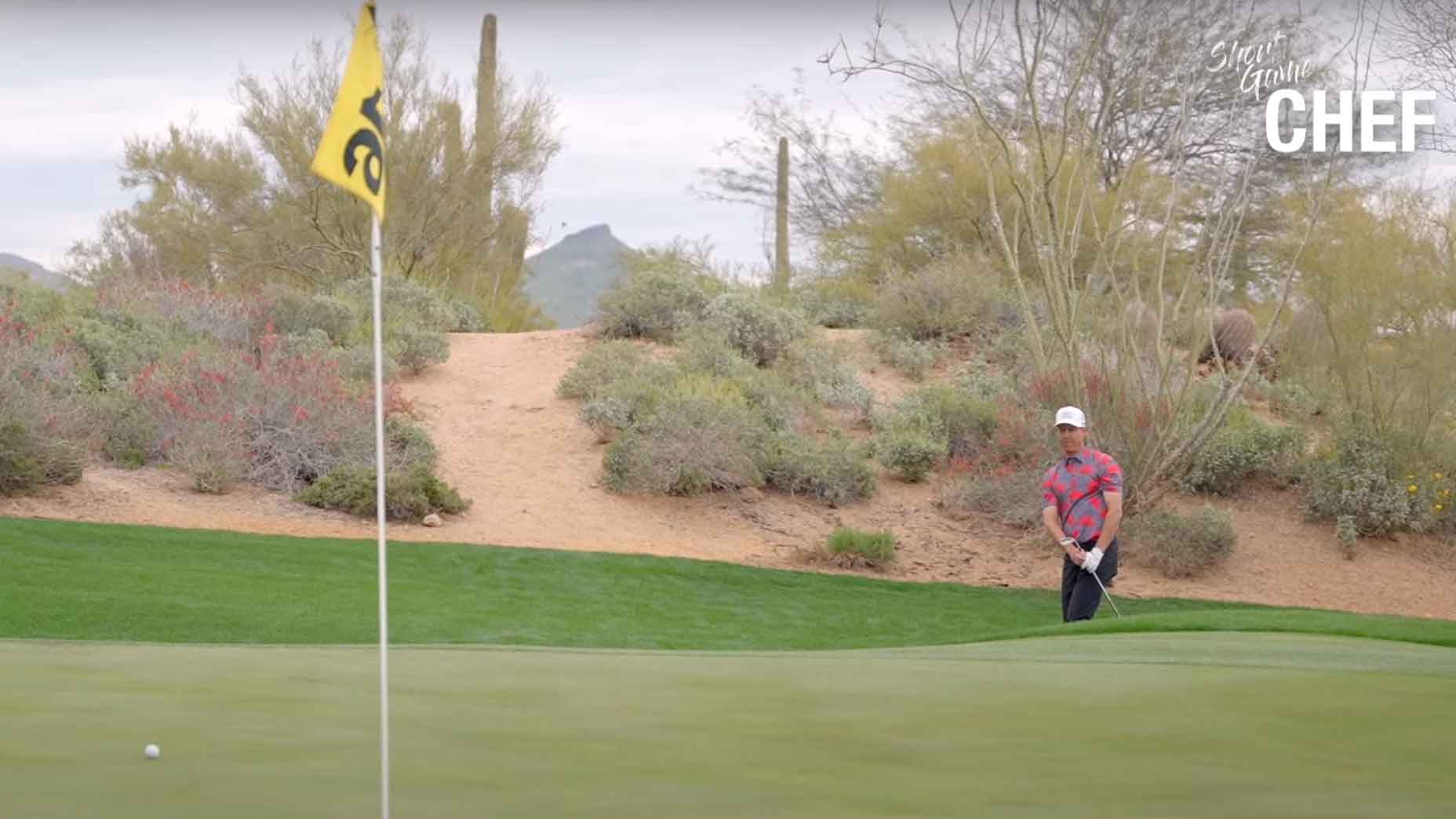Welcome to Shaving Strokes, a GOLF.com series in which we’re sharing improvements, learnings and takeaways from amateur golfers just like you — including some of the speed bumps and challenges they faced along the way.
Crushing your tee shot down the middle of the fairway is a fun experience, but you know what can really deflate a round? Not finishing the job once you’re around the green.
As I’ve gotten to know our GOLF Top 100 Teachers, nearly all of them tell me that the real way to start scoring lower is by mastering shots from within 50 yards — meaning chips, pitches, and putts.
Never skull or chunk another wedge shot. Here’s howBy: Mike Malizia, Top 100 Teacher , Nick Dimengo
But here’s a common problem amongst amateurs: Most players don’t actually practice the short game, since it’s not as sexy as swinging the driver. Even those who do stop by the chipping green often don’t spend enough time there, quickly rushing through a couple cursory short-game shots before a round.
If you’re serious about shaving strokes and giving yourself more opportunities for birdies and pars, you’ll need to dial in your distance control from around the green.
While that can seem like a daunting task, with the help of GOLF Top 100 Teacher Jim Murphy, you can add some structure to your short-game practice and become a master with a wedge in your hands. Check out below to find out how.
How to dial in your distance control in the short game
“If you’re not getting the ball close enough to the hole [when chipping or pitching], it’s hard to score well,” Murphy tells me. “An issue I see with players in the short game is that they try to control their distance with a rate of acceleration — which isn’t impossible, but it is hard to do consistently.”
So what causes this problem? According to Murphy, it typically occurs when players get too short in the backswing and get tense in the arms. This often leads them to try to accelerate on the downswing.
This clever trick can help you dial in difficult wedge distance controlBy: Kevin Sprecher, Top 100 Teacher , Nick Dimengo
“Since this type of shot often requires a shorter backswing, if they need more distance on the shot — and they don’t lengthen the backswing — then the only other way to hit it farther is to speed up the downswing,” Murphy adds. “Sure, this is one way to control distance, but it’ll lead to mixed and inconsistent results.”
If this sounds like your short game, Murphy offers the following tip to help you practice.
Don’t fear lengthening the backswing
“You have to lengthen your backswing,” he says. “This sounds easy, but it’s more of a challenge than you think.”
Murphy suggests starting by relaxing your arms at address, which will give you the freedom to extend your backswing. Next, take the club as far back as you feel like you have to without having to accelerate to hit your shot to the right distance.
“At first, you’ll still speed up and hit the ball too far,” Murphy adds. “But do not shorten your backswing or slow the downswing to hit it shorter. Resisting that urge is paramount when you’re trying to get better touch and feel for distance control.”
Murphy says to continue this swing practice until you feel the backswing lengthen and you avoid accelerating on the downswing. It should feel as if the club is dropping as it comes through impact, allowing the loft to do the work for you.
Short game myths that are costing you strokes, according to an expertBy: Nick Dimengo
“Now one thing you must remember is to avoid decelerating,” Murphy stresses. “Just use the natural acceleration of the length of the stroke to increase distance, not added swing speed.”
The old adage “let the club do the work” applies here.
Finally, Murphy suggests the following drill to help dial in your distance control in the short game.
“Try to hit 20-30-yard pitch shots while swinging as long as you can — but hitting the ball as short as you can,” he says. “It’s hard to nearly make a full swing and only hit it 20 yards, but when you can master this feel, you’ll better control both your speed and your distance.”















